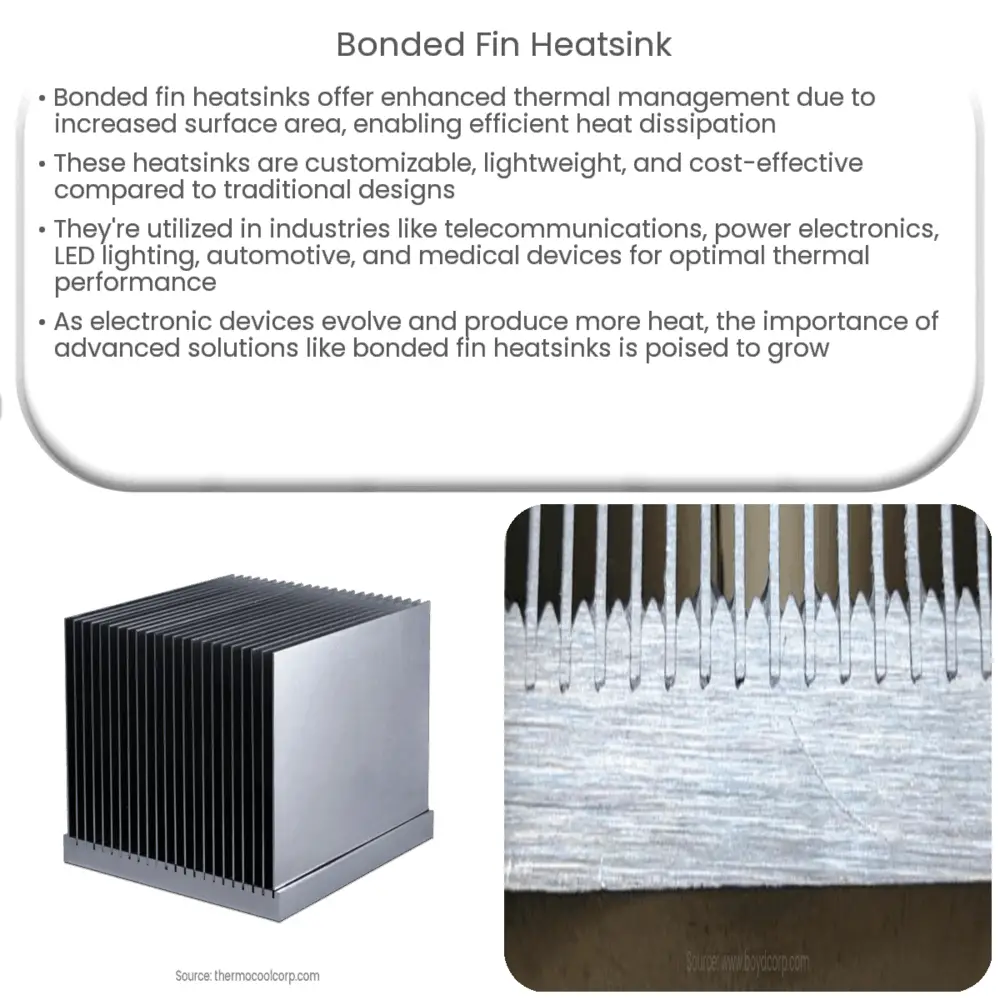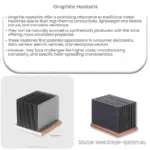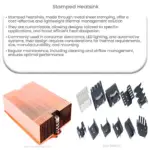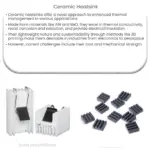A bonded fin heatsink is an efficient thermal management solution that uses fins bonded to a baseplate, offering improved heat dissipation and customizable design for various applications.

Bonded Fin Heatsink: An Efficient Solution for Thermal Management
Introduction
As electronic devices continue to evolve, the demand for efficient thermal management solutions has become increasingly important. One such solution is the bonded fin heatsink, which offers a significant improvement in heat dissipation performance over traditional heatsinks. This article will explore the design and benefits of bonded fin heatsinks, as well as their applications in various industries.
What is a Bonded Fin Heatsink?
A bonded fin heatsink is a type of heatsink that utilizes a series of fins, typically made from aluminum or copper, bonded to a baseplate. These fins are designed to maximize surface area for heat dissipation, thereby improving the overall thermal performance of the heatsink. The fins are bonded to the baseplate using a high-performance adhesive, epoxy, or brazing process, which ensures a strong, reliable connection between the components.
Design Considerations
When designing a bonded fin heatsink, several factors need to be considered, such as:
- Fin Material: The choice of fin material is critical for determining the overall performance of the heatsink. Aluminum is commonly used due to its lightweight properties and good thermal conductivity. However, for higher heat loads or more demanding applications, copper fins may be used to provide better thermal performance.
- Fin Spacing: The spacing between fins affects the heatsink’s thermal performance and pressure drop. Wider fin spacing allows for more airflow between the fins, resulting in lower pressure drop and better cooling. However, increasing fin spacing reduces the overall surface area, which may compromise thermal performance. Therefore, an optimal balance between fin spacing and surface area must be achieved for effective heat dissipation.
- Fin Height: Taller fins increase the surface area of the heatsink, which can improve its thermal performance. However, taller fins may also create more airflow resistance, leading to higher pressure drop and reduced cooling efficiency. Again, designers must strike a balance between these competing factors.
- Baseplate Material: The baseplate material plays a significant role in the heatsink’s overall performance. Aluminum baseplates are commonly used due to their cost-effectiveness and good thermal conductivity, but copper baseplates offer better thermal performance for high-heat applications.
Benefits of Bonded Fin Heatsinks
Bonded fin heatsinks offer numerous advantages over traditional heatsinks, such as:
- Improved Thermal Performance: The increased surface area provided by the fins enables more efficient heat dissipation, allowing bonded fin heatsinks to handle higher heat loads than conventional designs.
- Customizability: Bonded fin heatsinks can be tailored to specific applications, with customizable fin height, spacing, and material, allowing for optimal thermal management in a wide range of scenarios.
- Lightweight: By utilizing lightweight materials like aluminum, bonded fin heatsinks can offer significant weight savings over traditional designs, which is particularly beneficial for applications with weight constraints.
- Cost-effective: The manufacturing process for bonded fin heatsinks is generally less complex and less expensive than alternative methods, making them a cost-effective solution for many applications.
Applications of Bonded Fin Heatsinks
Bonded fin heatsinks are suitable for a wide range of applications across various industries, including:
- Telecommunications: High-performance communication equipment generates significant amounts of heat, requiring efficient thermal management solutions. Bonded fin heatsinks can help maintain optimal operating temperatures in devices such as routers, switches, and network servers.
- Power Electronics: Power conversion and control devices, such as inverters, converters, and motor drives, produce considerable heat. Bonded fin heatsinks can improve the reliability and performance of these devices by dissipating heat effectively.
- LED Lighting: High-power LED lighting generates heat that can reduce the lifespan and efficiency of the LEDs. Bonded fin heatsinks can help maintain lower operating temperatures, prolonging the life of the LED components.
- Automotive: Electric vehicles (EVs) and hybrid electric vehicles (HEVs) require advanced thermal management solutions to dissipate heat generated by batteries and electronic components. Bonded fin heatsinks can help improve the performance and reliability of these critical systems.
- Medical Devices: Many medical devices, such as imaging equipment and surgical instruments, require precise temperature control. Bonded fin heatsinks can help maintain the required temperature range for these devices, ensuring safe and effective operation.
Conclusion
Bonded fin heatsinks provide an effective and efficient solution for thermal management in a variety of applications. With their customizable design, improved thermal performance, and cost-effective manufacturing process, they are an excellent choice for many industries. As electronic devices continue to evolve and generate more heat, the demand for advanced thermal management solutions like bonded fin heatsinks will continue to grow, making them a critical component in the ongoing development of modern technology.
References
- Lee, S. (2017). Principles of Thermal Design: Heat Sinks, Thermoelectrics, Heat Pipes, Compact Heat Exchangers, and Solar Cells. Wiley.
- Guo, Z., & Lee, S. W. (2013). Thermal Management of Electronics: A Review of Literature. Thermal Science, 17(2), 613-634.
- Kraus, A. D., & Bar-Cohen, A. (2013). Design and Analysis of Heat Sinks. John Wiley & Sons.
- Sobhan, C. B., & Garimella, S. V. (2001). A Comprehensive Review of Recent Developments in Heat Sink Design. Applied Thermal Engineering, 21(15), 1593-1607.




